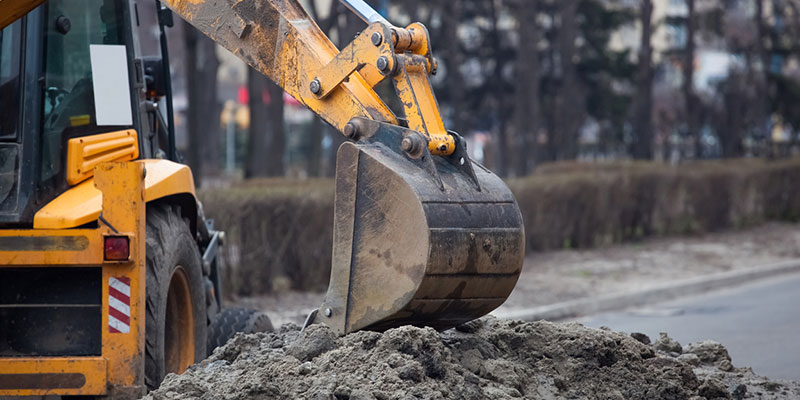Septic Ohio - Comprehensive Septic Tank Solutions in Ohio
Septic Ohio - Comprehensive Septic Tank Solutions in Ohio
Blog Article
Unveiling the Art of Excavation: Pro Tips for Safe and Efficient Digging
In the realm of excavation, the proficiency of secure and effective excavating is an art type that calls for adherence, expertise, and accuracy to well established methods. As soil is turned and planet is relocated, the details of excavation expose themselves, demanding an eager understanding of devices, dirt structure, safety and security methods, and ecological considerations. The competence needed to browse these aspects efficiently can mean the distinction between an effective excavation job and a potential calamity. By unwinding the layers of this elaborate process, a globe of understandings and techniques waits for those looking for to raise their excavation abilities to brand-new elevations.
Relevance of Proper Tools
To make certain the safety and efficiency of any kind of excavation project, making use of the appropriate equipment is critical. Excavation jobs vary in range and complexity, ranging from little property landscape design tasks to massive building and construction tasks.
Excavators are fundamental pieces of equipment in any digging operation. These functional makers can be found in different dimensions to suit different job requirements. Mini excavators are suitable for smaller sized tasks, while larger excavators deal with extra comprehensive tasks efficiently. Backhoes are one more essential tools kind, incorporating the functions of a loader and an excavator in one maker. They are useful for jobs requiring flexibility and maneuverability.
Excavators stand out in tasks that need pressing large amounts of dirt or debris. By spending in the proper tools, excavation projects can be finished securely, on time, and with precision.
Recognizing Soil Make-up
A comprehensive grasp of dirt make-up is basic for carrying out excavation jobs with precision and security. Comprehending the different sorts of dirt is essential as it directly impacts excavation techniques, equipment option, and total job effectiveness. Soil structure normally includes four main elements: sand, silt, clay, and natural issue. Each component has distinct homes that affect just how dirt responds to excavation processes.
Sand bits are the biggest and provide great drain but supply little cohesion. Silt fragments are smaller sized than sand yet bigger than clay, using moderate drainage and communication. Clay fragments are the tiniest and supply high communication yet poor water drainage. Organic issue, such as decomposing plant product, affects dirt fertility and security.
Prior to starting excavation, conducting soil tests to determine its structure and features is crucial. This information assists in picking the suitable equipment, applying precaution, and developing excavation techniques tailored to the specific soil conditions - septic ohio. By understanding soil composition, excavation professionals can boost project end results while making sure safety and adherence to finest practices
Precaution and Procedures
Understanding dirt composition is the keystone upon which safety and security measures and procedures for excavation projects are developed, ensuring the health of workers and the success of the endeavor. When it involves security throughout excavation, there are several vital steps that have to be executed to minimize risks and protect against crashes.
Firstly, before any type of excavating starts, a thorough assessment of the website need to be conducted to identify any type of prospective threats such as underground energies, unpredictable dirt problems, or nearby structures that can pose a risk. It is essential to have a proficient person manage the excavation process to make certain that all safety and security protocols are followed strictly.
Moreover, all employees associated with the excavation needs to be properly learnt secure digging methods and the proper procedure of devices. Individual protective tools (PPE) such as hard hats, high exposure apparel, gloves, and security boots should be put on whatsoever times to minimize the danger of injuries. lancaster trenching. Regular security conferences and toolbox talks must also be conducted to maintain all workers notified regarding prospective risks and strengthen risk-free job methods. By adhering to these precaution and methods, excavation tasks can be completed successfully and without case.
Effective Excavation Planning
When embarking on an excavation project, careful preparation is vital to guarantee performance, safety and security, and successful Home Page outcomes. Effective excavation preparation includes a number of key actions that are critical for the smooth implementation of the project. The primary step is to carry out a complete site assessment to recognize any type of prospective risks, such as underground energies or unsteady soil problems. This details is essential for creating an in-depth excavation strategy that consists of safety and security actions and take the chance of reduction techniques.
Once the site analysis is total, the following step is to create a clear timeline and routine for the excavation tasks. This includes determining the sequence of jobs, tools demands, and workforce appropriation. Proper organizing aids prevent hold-ups and makes sure that the project remains on track.

Additionally, communication among all employee is critical during the planning stage. Clear directives, normal updates, and efficient coordination are important for a successful excavation project. By investing effort and time in precise preparation, excavation teams can dramatically improve productivity, lessen dangers, and attain effective results.

Managing Environmental Factors To Consider
With raising emphasis on ecological sustainability in building techniques, taking care of environmental considerations has ended up being an important facet of excavation tasks. Excavation tasks have the possible to influence the surrounding setting via soil disintegration, sediment drainage, habitat disturbance, and contamination of water sources. To minimize these dangers, it is vital to implement ideal methods that prioritize environmental management.

Moreover, appropriate waste monitoring is crucial to avoid soil and water contamination. Executing treatments for the disposal of unsafe products, recycling of waste materials, and reducing making use of damaging chemicals can significantly decrease the environmental impact of excavation projects. By integrating these practices into excavation preparation and implementation, construction companies can ensure that their projects are not only risk-free and efficient however likewise environmentally accountable.
Conclusion
In conclusion, understanding the art of excavation calls for a thorough understanding of proper equipment, dirt structure, precaution, and effective planning. By complying with these guidelines and thinking about environmental variables, excavations can be performed safely visit this web-site and successfully. It is crucial to focus on security and productivity in every excavating job to guarantee effective end results.
As dirt is turned and planet is relocated, the ins and outs of excavation expose themselves, demanding an eager understanding of equipment, soil structure, safety and security official source protocols, and environmental factors to consider.To ensure the safety and security and effectiveness of any excavation project, utilizing the proper tools is critical.An extensive grasp of soil make-up is basic for executing excavation projects with accuracy and safety and security. Comprehending the various types of dirt is essential as it straight influences excavation approaches, tools selection, and total project performance. By comprehending soil structure, excavation professionals can improve project results while making sure safety and adherence to finest practices.
Report this page